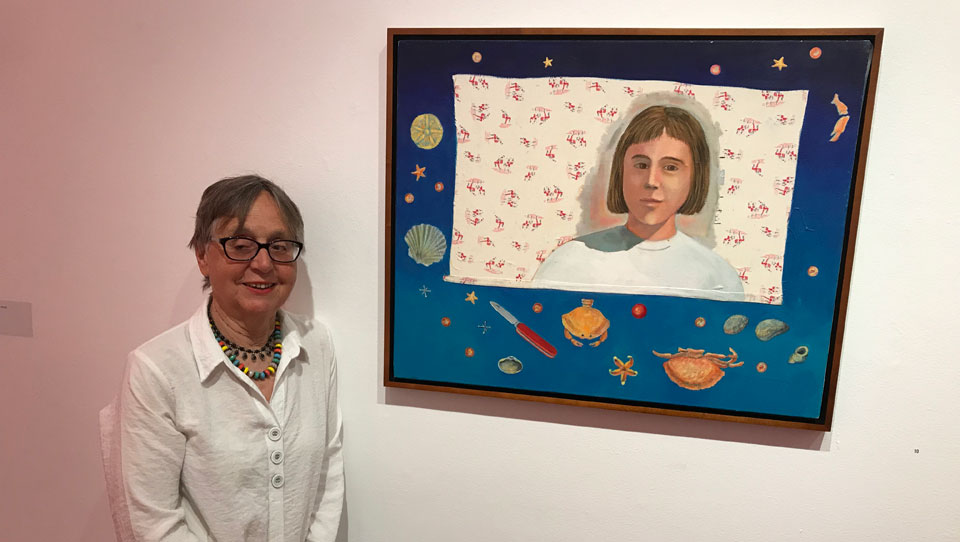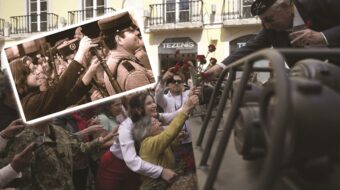
VENICE, Calif.—There was a time not so long ago when calling a young girl a “tomboy” was considered a put-down. Perhaps it was accompanied by a good-natured smirk, or maybe a scornful snarl. It meant that girl was fonder of flannel than lace, more drawn to climbing trees than hosting teas, likelier to take off on a 16-mile hike with the Scouts than hunt down the perfect Sweet 16 gown.
Get to a certain age, when tomboys are supposed to give up their counter-instinctual inclinations and start thinking about boys and dates and proms, and people really start talking. What’s wrong with her? Is she, omigod, a pervert?
The modern sexual liberation movement that began with the Stonewall Rebellion 50 years ago has changed all of that—although there were many precursors to liberation all through the ages. The ancient Hindus, Chinese, Hebrews, Greeks and Romans, as well as Native cultures in most parts of the world, all were aware of nonconformists to the prescribed regime.
“Tomboy,” like other terms in the vocabulary of slurs and contempt, has been reclaimed and validated, as “queer” and even stronger words such as “faggot” and “dyke” have also been, when used in a positive, supportive context. (Dykes on Bikes are a standard feature of every Pride Parade.) The same re-appropriation of words and stereotypes takes place in most minority and despised cultures as a way of defanging the oppressor and claiming ownership.
“The Tomboy paintings are based on images and memories of myself as a tomboy and repainted on my tomboy clothing: jeans, flannels, and T-shirts,” artist Christina Schlesinger recalls of her growing up in the 1950s and ’60s. “I fought with my mother over wearing dresses. I wanted to wear pants, shoot marbles, and ride my bike really fast. I led a little gang that stole comic books from Scannel’s drug store. That bright and sturdy tomboy spirit saved and saves me.”
The series of paintings Schlesinger created in the early and mid-1990s may have marked a milestone in her own evolution as an artist, but they went largely unrecognized at the time. Galleries were just opening up to a few gay male artists who made their sexuality central to their work, and in the public arena the oppressive fulminations of homophobic Sen. Jesse Helms dominated the conversation. Fights were waged over National Endowment for the Arts inclusion of gay artists. Lesbians barely registered.
Schlesinger was a member of the Guerrilla Girls—a once secretive, anonymous collective of women artists who “bombed” galleries and museums with their protests (dressed in gorilla disguise) against the male domination of the art scene. They computed how many gallery and museum shows were dedicated to women, how many women’s works were owned and displayed by major museums, how many curators, gallerists and art directors were women, how many women’s shows got reviewed in the mainstream as well as in the art media. They had an incalculable influence in bringing awareness of discrimination against women in the arts to the general public.
The persona Schlesinger adopted was that of pioneering lesbian artist Romaine Brooks, whose profile she sometimes recapitulates into her own paintings.
The Tomboy series had been hidden from view for decades, mostly because the artist had no place to exhibit the work. A few years ago, however, true to her roots in the Guerrilla Girls movement, she approached the Leslie-Lohman Museum of Gay and Lesbian Art in Manhattan’s Soho District, pointing out that even in an institution dedicated to gay and lesbian art, the vast majority of its space and curatorship was dedicated to gay male artists. That pressure resulted in a 2015 exhibition of the Tomboy paintings, and a milestone that had been invisible for so long suddenly came into view.
Tomboys is now enjoying a run (through August 16) at the Durón Gallery at SPARC (Social and Public Art Resource Center) in Venice, its first outing on the West Coast.
The collection contains over twenty mixed media oil paintings that examine the connections and intersections between gender, identity, fashion, sex, and representation. The works explore self-portraiture, feminist nudes and lesbian sexuality. By its very existence and presence, the show reveals how little work in these genres had been produced during that era, and therefore how vital it is for this work to be exhibited and appreciated now. It recaptures a time in the artist’s life when she began to feel empowered and brave.
Along with the tomboy paintings, Schlesinger’s show includes another series of “Nudes & Dildos.” The female nude has been a subject of art and totemic veneration since before the dawn of recorded history. Yet how many of those artists were women? Can we separate that imagery from the gaze of the male creator? In this series, the lesbian gaze onto these models shows, in the artist’s words, “a confident female body, from neck to thigh, arms on hips or crossed over the chest, in a both defiant and relaxed attitude, occasionally wearing a dildo. The dildo certainly give an added dimension. I did not want to be a boy, just a girl with something extra for a while.”

There are probably but a handful of galleries in the world where such art could be shown even today.
In her pre-opening talk on June 8, Schlesinger explained that today a much wider range of medical and surgical options is available to people contemplating their sexual identity and expression. In that way, these images represent a specific phase of lesbian sexuality that will likely never be completely replicated again.
SPARC is located in a classic Art Deco building originally erected as the police station and jail of the City of Venice, before this oceanside community was incorporated into the City of Los Angeles. The gallery space is located where the jail once was, and in tribute to its past, SPARC has kept some of the iron gates and one cell intact. Who can say how many lesbians in flannel shirts and jeans might have been kept overnight in these cells and charged for “impersonating the opposite sex” (which was a crime in those days), or how many men in wigs and blouses, skirts and heels were dragged in to be booked?
Inside the sole remaining cell Schlesinger has installed a slide show of photos she took decades ago when she lived in the area. Sensing that one day these photos might have some historic value, she shot images of all the lesbian bars and clubs in L.A. In those times lesbian culture was more strictly delineated between “butch” and “femme,” and the artist’s work reflects that period. Not one such bar remains in L.A. today. The very landscape of lesbian desire has shifted to other platforms and venues.
The exhibition is accompanied by a full catalogue containing more images from these series than were able to be shown in the gallery. It is a uniquely precious document of its time. It can be accessed here. Visit www.christinaschlesinger.com for more information about the artist.
SPARC, and its store and gallery, is located at 685 Venice Blvd., Venice CA 90291. It is open to the public Tues.-Fri., 11 am-6 pm, and Sat., 11 am-5 pm.












Comments